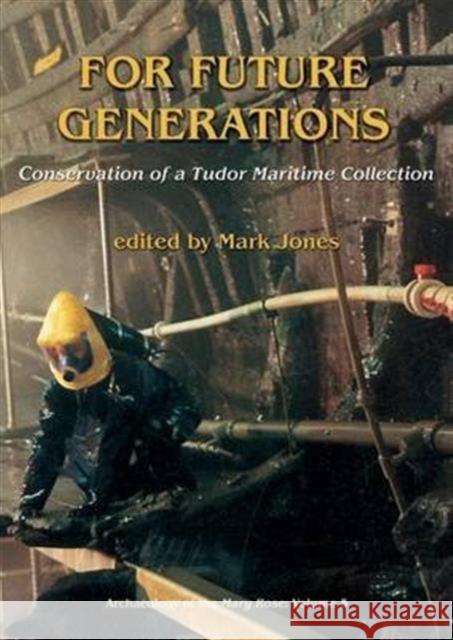For Future Generations: Conservation of a Tudor Maritime Collection » książka
For Future Generations: Conservation of a Tudor Maritime Collection
ISBN-13: 9781785701559 / Angielski / Miękka / 2015 / 160 str.
The Mary Rose, one of the first great British warships and Henry VIII's flagship, sank in 1545, taking all her contents and most of her crew to the bottom of the sea. The conservation of the hull of the Mary Rose, and more than 26,000 objects recovered during her excavation, has been a massive undertaking. The complex process of conservation was begun even before the hull was raised from the seabed in 1982, and continues today. For Future Generations: Conservation of a Tudor Maritime Collection is one of the series of books published by the Mary Rose Trust, with the Heritage Lottery Fund, on the archaeology of the Mary Rose. It provides an introduction to the conservation programme devised for the Mary Rose, and the principles, objectives and problems of marine archaeological conservation. A huge range of objects were recovered from the ship, including wood, textiles, leather, ceramics, glass, stone, metals, rope, pieces of sail-cloth, and many hundreds of animal and human bones. Almost all objects required some kind of treatment to halt the effects of 450 years of immersion in saltwater. This volume explains the conservation methods used for the treatment and preservation of each major category of material. It describes the processes of decay and degradation and the results of bacterial and animal infestation that affect shipwrecks in general, and the Mary Rose in particular. The variety and immensity of the task facing the excavators of the Mary Rose was so great that new methods and treatments had to be devised and tested. It proved to be ground-breaking work. The conservation work did not stop with the stabilisation of the hull and objects from the wreck. Museum display and the continuing storage of most objects presented their own problems. This volume also describes the design and construction of specialized display cases, ensuring that the museum could control and monitor potentially destructive environmental factors such as light, humidity, heat and atmospheric pollution, as well as allowing good public access to the objects.











